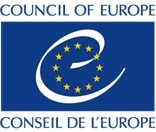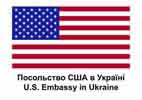Новини
Coverage of parties determined by political consideration and not newsworthiness
29.08.2012
Media Monitoring of Coverage of Political Actors during the Pre-election Campaign
Period in Ukraine 2012
implemented by Association "Common Space" / Committee "Equal Opportunities"
with the support of European Union and the Council of Europe Joint Program
"Promotion of European Standards in the Ukrainian Media Environment"
PRESS RELEASE
UNIAN, August 29, 2012 Contact: Olena Bondarenko
(+380 44) 483-03-72, 483-57-33,
067 441 51 30, press@adamant.net
Coverage of parties determined by political consideration and not newsworthiness
Data undermine stereotypes about the media: private and business- oriented media
appear to be overtly politicized
Channels do not provide analytical and critical coverage of authorities, thus failing to inform the electorate about consequences of bad governmence – the incumbent government less criticized than the previous one
State-owned UT1 not providing impartial and objective coverage
INTER TV provided 32 times more negative coverage about “Bat’kivshchyna” ("Fatherland", United Opposition) than about the Party of Regions
The only region where “Bat’kivshchyna” and “UDAR” get more coverage than the Party of Regions is Ivano-Frankivs’k
Channels in Donetsk dedicated to the Party of Regions over three and a half hours, and to “Bat’kivshchyna” only some 2 minutes
Internet has so far provided the best quality information about the campaign.
The interim monitoring results of the national and regional media coverage of election campaign were presented by the head of the "Equal Opportunities" Olexandr Chekmyshev August 29, 2012 in Kiev. In addition, the Council of Europe expert Rasťo Kužel (from the Slovak media monitoring organization MEMO 98) commented on the preliminary monitoring results from a more general perspective, comparing them with the previous campaign in Ukraine and also with election campaign in other 24 countries, where he was a head of monitoring missions. Olexandr Chekmyshev highlighted the fact that:
While "TVi and Novyj Kanal provided most of their time for election-related coverage during the first three weeks of monitoring, Inter, 1+1 and STB provided the least
The Party of Regions was the most covered political party in the press. While “Svoboda” and CPU were mentioned only occasionally UDAR and "Ukrajina - vpered!" received some coverage - largely due to the "jeans" (hidden advertising disguised as news).
Similarly to national broadcasters, regional media also actively use manipulative techniques and media effects: labeling, imposing final understanding of the topic in the last words of the material or in the accompanying illustrations, the use of unverified facts with reference to sources like "rumors".
Compared to televiosion and press, monitored Internet sites appear to have provided more political diversity in their reporting of the campaign - especially with regard to the presentation of the two main contestants – Party of Regions and “Bat’kivshchyna”.
National television channels
Nationwide television channels have so far failed to provide analytical and critical coverage of authorities, thus failing to inform the electorate about consequences of public policy on their lives. These channels do not provide proper analysis and if criticism occurs, it is mainly addressed to the opposition. Most of the national TV stations provided the bulk of their coverage to the Party of Regions which was overall portrayed in a more positive than negative manner.
The ruling party was also given a direct opportunity to approach viewers (so called direct speech) more often (2-3 times more) than the opposition. (on ICTV - 5 times more, on UT1 almost almost 10 times more).
The most portrayed politician of the ruling party was Mykola Azarov who received most of his media attention in his capacity as Prime Minister. When the opposition received opportunity to speak directly, it was often in connection with the cases of Tymoshenko and Lutsenko. The most covered opposition politicians were Serhiy Vlasenko, Iryna Lutsenko, rarely Olexandr Turchynov and Arsenij Yatsenyuk.
Nationwide press.
Monitored newspapers devoted most of their coverage to the Party of Regions which received more coverage than “Bat’kivshchyna”. As for the tone of the coverage, this varied according to a specific newspapers. As for the coverage of the other parties, they received much less coverage in comparison with the two main contestants. For example, "Svoboda" and CPU were mentioned only sparingly and UDAR and "Ukrajina - vpered!" were mentioned thanks to "jeans"
The most covered topics during the monitoring period were singing of the “language law” by the president, Central Election Commision’s registration of party lists and the lawsuits against Yulia Tymoshenko and Yuriy Lutsenko.
The stories about government initiatives often looked like paid for ("jeans"). The fact that these articles are not clearly labeled as advertising results in perception that they are normal news stories. The same can be said about a number of materials portraying the “Bat’kivshchyna” party, the UDAR and the "Ukrajina – Vpered!" party.
The most portrayed politicians of the Party of Regions were Viktor Yanukovych, Mykola Azarov, Serhij Tihipko; and from opposition politicians - Olexandr Turchynov, Arsenij Yatsenyuk, Anatolij Grytsenko.
Most space for election-related coverage were devoted by "Commentarii"(“Comments”) - 44.4%, “Hazeta po-ukrajins’ky” ("Newspaper in Ukrainian") - 15.8% and “Dzerkalo Tyzhnja” ("Mirror Weekly") - 13.6%. Outsiders: “Segodnja” ("Today") - 7.7% and “Fakty i Kommentarii” ("Facts and Comments") - 8.9%.
Nationwide Internet sites
Monitored Internet sites covered the activities of all the six parties actively, with all of them making public the complete lists of candidates – for both components of elections (for proportional lists and also for candidates in single mandate constituencies). Most of monitored web sites published their own reports on meetings, analyzed the party lists, and covered key events of the campaign.
Similarly to the traditional media, Internet web sites also allocated most of their coverage to the two frontrunners - PR and "Bat’kivshchyna" In general, "Bat’kivshchyna" received 3 times more negative coverage than the Party of Regions in connection with its electoral list.
As for the tone of the coverage, it was mainly neutral. However, there was also a number of negative stories about the Party of Regions, the United Opposition, and UDAR (in the form of analysis prepared by journalist and also in the form of criticism by opponents). Positive information was presented in small quantities, associated mainly with speakers’ expressions about their political power and their achievements.
The most active in terms of election-related coverage were “Hlavkom” and “Ukrajins’ka Pravda” ("Ukrainian Truth", UP) and the least active – “Obozrevatel’” ("Observer"). Sites "Correspondent" and “Livyj Bereh” ("Left Bank") delivered mostly neutral information. UP, “Obozrevatel’” and “Hlavkom” provided a number of analytical materials and interviews on election-related issues. At the same time, the the biggest amount of articles used from different sources were placed by “Hlavkom” and "Correspondent". Conversely, - UP and “Obozrevatel’” ran the biggest number of their own stories.
As for the monitoring of the regional media, the ruling party received the biggest amount of coverage in all but one region (Ivano-Frankivsk).
***
The monitoring has been conducted from July 30 until August 19, 2012. Its objective is to determine whether channels provide complete, high-quality, impartial and balanced information about electoral contestants, thus enabling citizens to make an informed choices during the upcoming parliamentary elections and also whether political parties have equitable l access to present their positions.
This is the largest media monitoring in the history of Ukraine. The sample contains 229 media, including leading national media and television channels, newspapers and web sites of Crimea and all regions of Ukraine. The principle of selection is the number of audience, influence; state, municipal or commercial status, affiliation to political parties.
You can find the complete report at: http://www.prostir-monitor.org/index2.php?PGID=145
Сreate and review charts at: http://www.prostir-monitor.org/index2.php?PGID=133




















